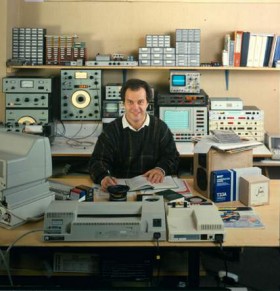Abstract Leo Beranek was born in 1914 and spent his childhood in Mt. Vernon, Iowa. He attended Cornell College in Iowa and worked while studying as a radio and small appliance repairman. He received his Bachelor’s at Cornell College in 1936 and worked for Collins-Rockwell radio company in Cedar Rapids, Iowa. A chance encounter with Glenn Browning lead Beranek to apply to Harvard University for graduate study, where he was awarded a full scholarship. While at Harvard, Beranek begins working with Professor Hunt as his assistant at the university’s Cruft Laboratory. Beranek began work on a sound control project for [...]



